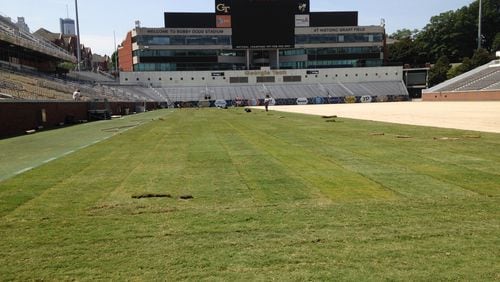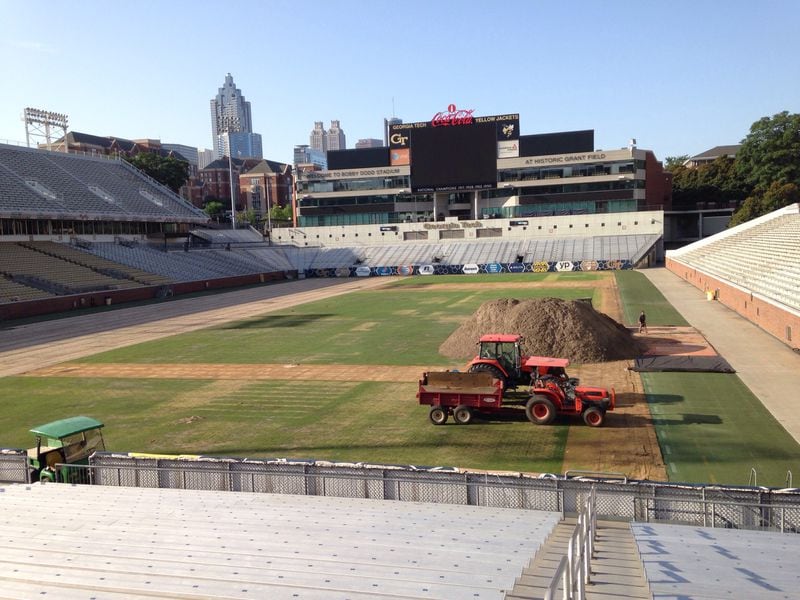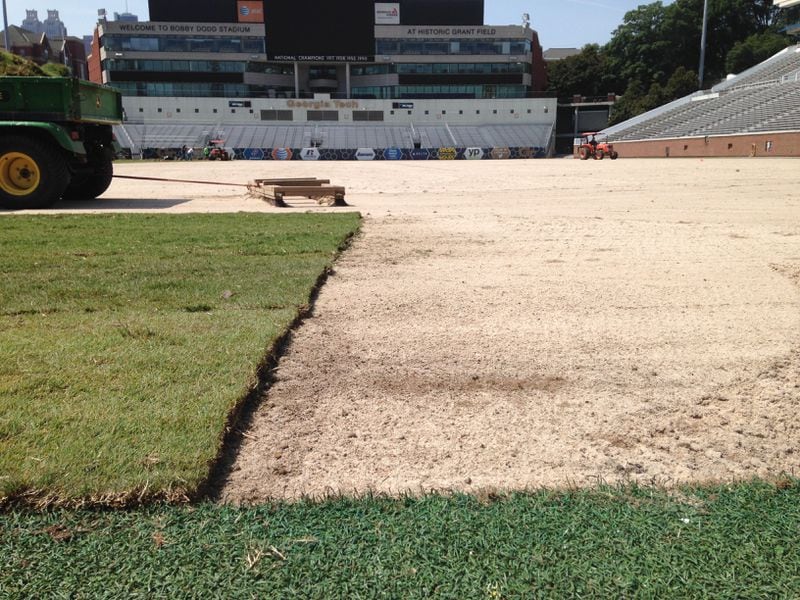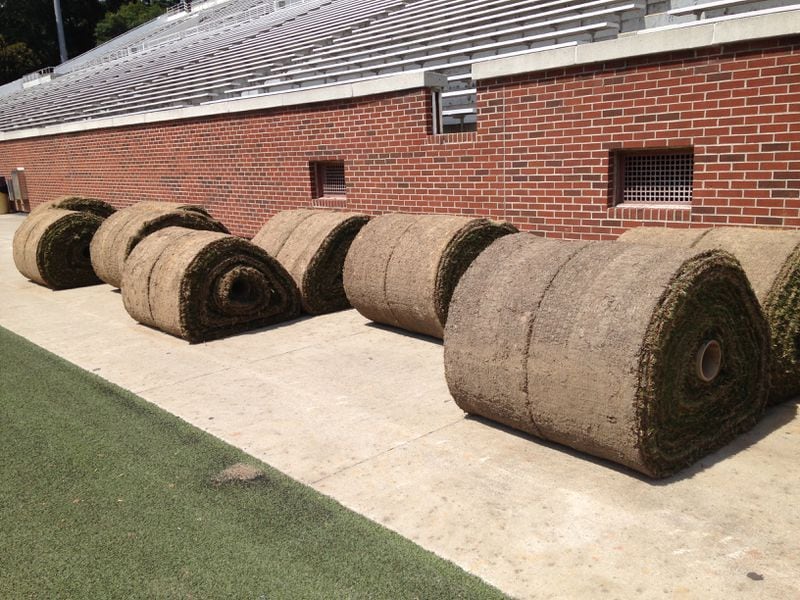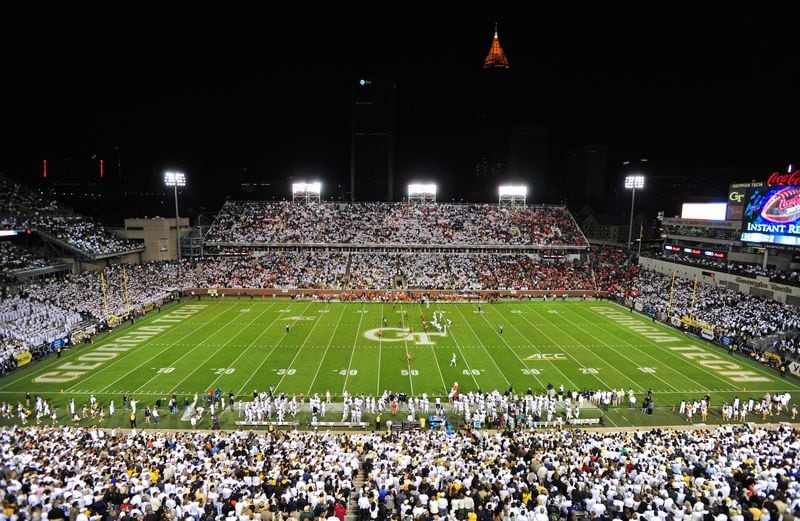The Rolling Stones had their turn at Bobby Dodd Stadium June 9. For the rest of the summer, the main performers will be Georgia Tech assistant director of facilities and turf Jon DeWitt and the Georgia Tech groundskeeping crew.
DeWitt oversaw the stripping of the turf damaged by the concert and last week supervised the installation of new Bermuda grass sod over a bed of sand. The next job is growing the turf and helping it knit into a football field suitable for 300-pound cleat-wearing linemen, marching bands and the Ramblin’ Wreck by Sept. 3.
After the concert, it was determined that the damage was sufficient enough that the concert producers (AEG Live) would pay to have it replaced. Tech and AEG Live wrote a clause into the concert contract anticipating such an outcome, and AEG Live agreed to pay up to $75,000. Deputy athletic director Brett Daniels said much of the damage was caused by the cranes that brought the stage and lighting equipment onto the field.
Having the concert enabled Tech to allow someone else to pick up most of the cost of the turf replacement, about $90,000. That savings, plus the $300,000 the athletic department netted from the concert, not to mention the visibility that the event gave to the school and stadium, made the concert a considerable success.
Credit: Ken Sugiura
Credit: Ken Sugiura
The first step in replacing the field is removing the old turf. In an e-mail, DeWitt said the field was stripped with a Koro machine. On fields such as Tech’s, turf is laid directly onto a sand base to aid with drainage. Over time, though, the depth of the field grows as organic material (such as grass clippings) decomposes and gathers under the surface. Laid down in 2011, the field depth had grown to about three inches by this summer, which hinders drainage. It’s why the field was likely going to be stripped next year if not for the concert.
It took most of the week following the concert to strip the field and haul the field and dirt away.
Credit: Ken Sugiura
Credit: Ken Sugiura
The following week, starting on the 21st, the sand base – which is 10 inches of USGA-certified sand resting atop four inches of gravel – was graded by laser to make the field perfectly level. Equipment to water the field – irrigation heads and valve boxes – was re-set. The sod –Tifway 419 from a turf farm in Adel – was brought in beginning late last Wednesday and installed Thursday, Friday and Saturday of last week.
The turf arrived in rolls 42 wide and 36 inches tall. The turf was unrolled on the field with a tractor and a groundskeeper laying it down in strips running the length of the field. Unfurled, the strips measured about 25 yards long. As they were laid down, crew members tugged the strips together with rakes and used knives to trim overlapping strips of turf.
Credit: Ken Sugiura
Credit: Ken Sugiura
The next two months will be spent watering, aerating and spreading fertilizer and plant-growth regulators, which promote horizontal and tighter growth.
“The grass does a great job of knitting together on its own – one of (the) main reasons why this type is widely used in sports – but particular fertilizers can promote different things from color to rooting to density,” DeWitt wrote.
The field will be used for the final movie screening of the Dodd After Dark series July 10 (Furious 7). It will then have to withstand fan day and one or more scrimmages before the season opener Sept. 3.
Credit: Ken Sugiura
Credit: Ken Sugiura
About the Author
